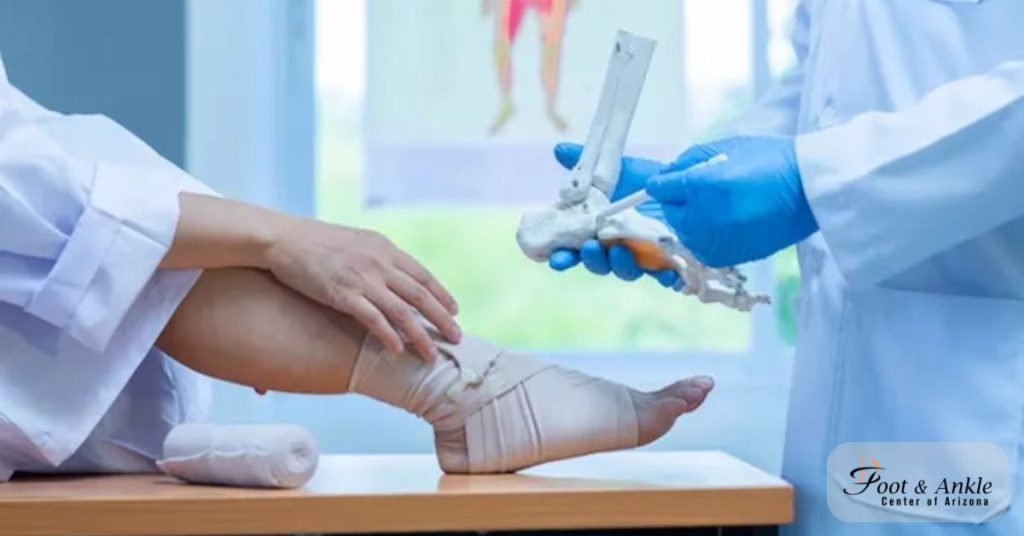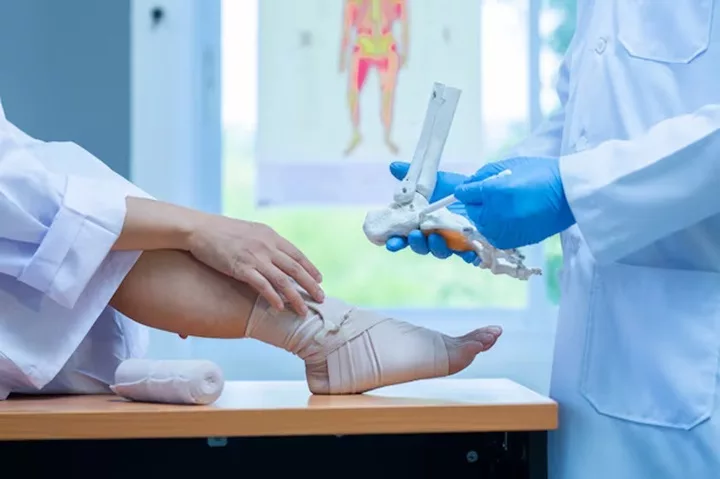Experiencing a foot or ankle injury can be both painful and frustrating, but knowing the proper steps to take immediately after can make all the difference in your recovery. Whether you’re an athlete, a weekend warrior, or someone who’s just had an unfortunate misstep, the RICE protocol remains a widely recommended first aid response. Let’s dive into what the RICE procedure entails, its effectiveness, possible alternatives, and how adhering to this regimen can significantly impact your recovery time.
Understanding the RICE Protocol
The RICE protocol is an acronym that stands for Rest, Ice, Compression, and Elevation. It’s a first-aid treatment commonly suggested for the initial management of sprains, strains, and other soft-tissue injuries. This protocol is designed to reduce swelling, ease pain, and expedite the healing process.
Rest: The First Line of Defense Against Further Injury
When you’ve injured your foot or ankle, the first and arguably most crucial step is to stop all activity that puts weight on the affected area. Continuing to walk or bearing weight can increase damage to the injured tissues. Rest not only prevents the worsening of the injury but also allows the healing process to begin without interruption.
Ice: The Cold Comfort for Injury
Applying an ice pack is a tried-and-true method to manage inflammation and numb the pain. The cold constricts blood vessels, reducing blood flow to the injured site, and in turn, helping to limit swelling and bruising. For effective icing, envelop an ice pack in a thin towel to protect your skin and apply it for 20 minutes. Then, give your skin at least a 40-minute break before repeating the process.
Compression: Keeping Swelling at Bay
An often-underestimated component of the RICE method, compression involves wrapping the injured foot or ankle with an elastic bandage. This steady pressure not only supports the area but also helps control swelling. Be cautious not to wrap the bandage too tight, as this can impede circulation and delay healing.
Elevation: Working with Gravity to Reduce Swelling
Another key player in your recovery is the act of elevating your injured foot or ankle above heart level. This position aids in decreasing swelling by facilitating venous return — the process of blood flowing back to your heart. Elevating your injury while you rest, ice, and compress can significantly minimize inflammation and speed up recovery time.
Is the RICE Protocol Effective?
The RICE protocol is the go-to method recommended by medical professionals and echoed by credible sources like FootHealthFacts.org. However, its effectiveness largely depends on how promptly and correctly it is implemented following an injury. Studies have shown that the early application of the RICE method can significantly reduce recovery time and improve outcomes.
The RICER Regimen: Adding R for Rehabilitation
Some experts suggest an addition to the RICE acronym — turning it into RICER, with the last ‘R’ standing for Rehabilitation. Rehabilitation refers to exercises and physical therapy that should eventually follow the rest phase, to restore strength, and flexibility, and prevent stiffness of the injured area.
What Replaced the RICE Method?
While RICE still stands firm in treatment recommendations, there’s always room for innovation and improvement in medical methodologies. Some recent approaches include movements like PRICE (Protection, Rest, Ice, Compression, Elevation) or POLICE (Protection, Optimal Loading, Ice, Compression, Elevation), which emphasize protection and appropriate load on the injury for optimal recovery.
Benefits and Limitations of RICE Protocol
When properly applied, the RICE regimen offers undeniable benefits, such as reducing immediate pain and swelling, protecting from further injury, and starting the recovery process quickly. However, it’s equally important to recognize its limitations. For example, RICE should be a temporary measure, not a substitute for professional medical treatment.
Implementing RICE Protocol with Expert Advice
To ensure you get the most out of the RICE protocol, consult with healthcare professionals. Podiatrists and other medical experts can provide tailored advice on how to execute each step effectively, considering the specifics of your injury. Additionally, they can guide you when it’s time to transition from RICE to active rehabilitation or other treatments.
In conclusion, foot and ankle injuries might be common occurrences, but swift and savvy responses can prevent them from becoming long-term hurdles. Recognizing the RICE protocol as the starting line in your race to recovery is essential. Make sure to consult a healthcare provider to assess your injury and get a comprehensive recovery plan in place.
Remember, time is of the essence when it comes to injury management. So the next time you or someone you know suffers an ankle sprain or foot strain, think RICE – Rest, Ice, Compression, and Elevation – and get on the fast track to healing.





